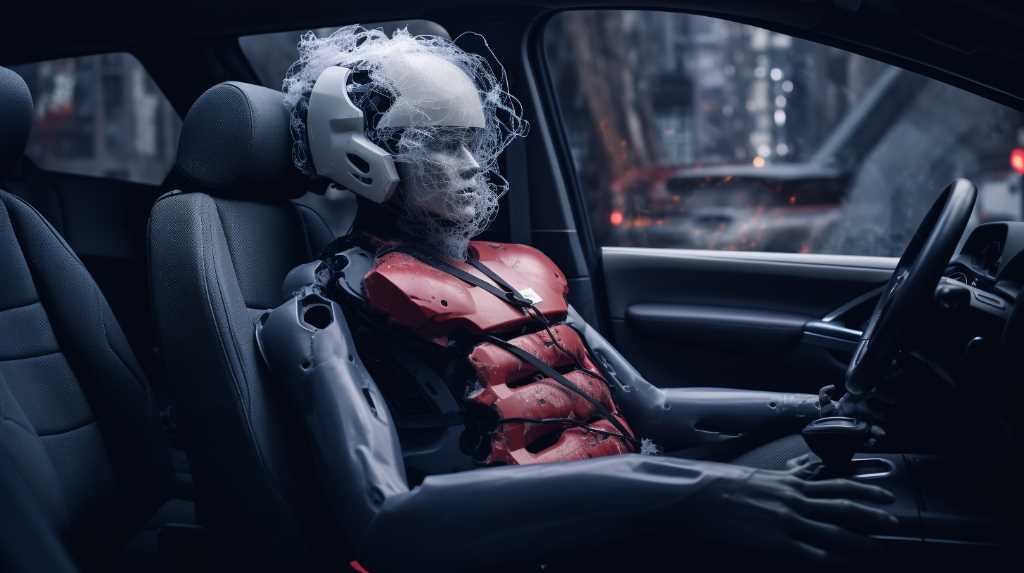
To help prevent injuries if you’re in a car crash, it’s important to follow a few key steps.
First, always wear your seat belt because it can save your life and help you avoid serious injuries.
Make sure your headrest is set right to help stop neck injuries like whiplash.
Drive carefully, keeping enough space between you and the car in front, and pay attention to the road to help avoid crashes.
Keep your car in good shape, especially your brakes and tires, to help prevent problems that could cause an accident.
And finally, be ready for emergencies by having the right gear and knowing what to do, so you can handle tough situations better.
Wear Seat Belts Correctly
Wearing a seat belt the right way is key to staying safe in a car crash. To reduce the chance of getting hurt, you need to make sure the seat belt fits you well.
The part of the belt that goes over your lap should be tight against your upper legs, not your stomach. The part that goes over your shoulder should rest on your chest and collarbone without touching your neck. Wearing it this way helps to protect you because these parts of your body are stronger and can take the force of a crash better.
Also, it’s important that the seat belt can pull itself tight quickly if you stop suddenly, so there’s no extra slack. This helps to keep you from moving too much and getting injured.
Make sure your seat belt works right and always wear it correctly to stay as safe as possible.
Adjust Headrests Properly
Adjusting your car’s headrest the right way is really important for keeping your neck safe if you ever get into a crash. Think of the headrest like a trusty helmet for your head – it’s there to stop your head from snapping back too far if someone hits your car from behind, which can save you from getting a nasty neck injury called whiplash.
To make sure the headrest does its job, you’ve got to line it up right with your head. The top of the headrest should be even with the top of your head, or at least up to your ears. This is key to keep your neck from bending back too much. Also, you don’t want a big gap between your head and the headrest – keep it less than four inches if you can – so it can catch your head quickly during a crash.
This helps slow down your head’s movement and cuts down on the force hitting your neck.
Practice Defensive Driving
Driving safely is really important to avoid crashes and stay out of harm’s way on the road. Defensive driving is a good way to do this. It means always paying attention, being ready for sudden problems, and keeping enough space between you and the car in front. When you drive defensively, you’re always looking out for danger, watching how traffic moves, and trying to guess what other drivers might do next.
For example, if you see a car weaving in and out of lanes, you’ll be ready to slow down or move over to stay safe. You should also keep an eye on cars next to you and change your speed if traffic gets heavy or light. Using your mirrors well is key to knowing what’s happening around you, and if you need to switch lanes or turn, do it early enough so you don’t have to rush and make a risky move.
If you drive this way, you’re less likely to get into a crash and get hurt. Remember, it’s all about being careful, making smart choices, and staying aware of what’s going on around you.
Maintain Your Vehicle
Regular vehicle maintenance is a critical component of reducing the risk of injuries in the event of a car accident. Adherence to manufacturer-recommended service intervals ensures that primary safety systems such as brakes, airbags, and seatbelts are functioning optimally.
For example, the integrity of braking systems can be compromised by worn pads or low brake fluid levels, leading to increased stopping distances and potential collision severity. Tire inspections are equally vital; inadequate tread depth or incorrect tire pressure can result in diminished traction, increasing the likelihood of loss of vehicle control.
Furthermore, ensuring that headlights and taillights are operational improves visibility for the driver and alerts other road users, thus preventing accidents.
Proactive vehicle maintenance is an analytical strategy to mitigate accident risks and injury severity.
Prepare for Emergencies
To effectively mitigate the impact of unforeseen road incidents, drivers should equip their vehicles with comprehensive emergency kits and familiarize themselves with basic first aid and emergency procedures. An optimal emergency kit should include medical supplies such as bandages, antiseptics, gauze, and splints to address immediate injuries. Additionally, it should contain tools like seatbelt cutters, window breakers, and reflective warning triangles to enhance safety post-collision.
Analyzing the statistical data on vehicular accidents, the integration of emergency training, such as extrication techniques and CPR, into a driver’s skill set significantly increases the probability of favorable outcomes during an accident. Vehicle operators should, therefore, seek certified training to adeptly manage trauma and ensure prompt, correct application of emergency measures while awaiting professional medical assistance.
Conclusion
To reduce the chance of getting hurt in a car crash, it’s important to do a few key things.
First, always wear your seat belt properly—it’s your best defense in an accident.
Adjust your headrest so it’s at the right height to prevent whiplash.
Driving carefully and being aware of other drivers can help you avoid accidents in the first place.
Keep your car in good shape; regular check-ups can prevent problems on the road.
And lastly, know what to do if you’re in a crash, like having an emergency kit in your car.
Following these steps can make a big difference in keeping you safe.